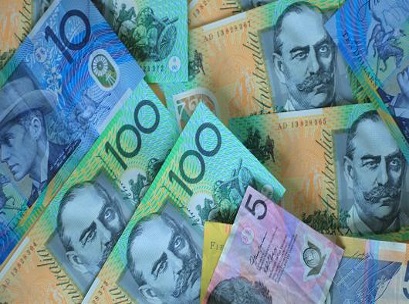 The Australian dollar continued to slide Thursday buying 72.67 US cents from 72.92 US cents on Wednesday.
The Australian dollar continued to slide Thursday buying 72.67 US cents from 72.92 US cents on Wednesday.
Yesterday, the local currency slumped after disappointing GDP data further dimmed the chance of any rise in interest rates, while carnage in global share markets combined to pull bond yields to one-year lows.
The Aussie stumbled back to US$0.7317 and away from a four-month top of $0.7394 hit early in the week.
Doing the damage was data showing the Australian economy grew just 0.3 per cent in the third quarter, half the pace forecast by analysts.
Downward revisions to the past meant annual growth slowed to just 2.8 per cent.
“Today’s result was underwhelming,” said CBA economist Gareth Aird.
“Consumer spending remains the key risk given weak income growth and dwelling prices that look set to continue deflating in Sydney and Melbourne.”
“Trend-like growth won’t be generating much in the way of upward pressure on prices and wages. Monetary policy will stay unchanged for the foreseeable future.”
The Reserve Bank of Australia (RBA) has already kept rates at record lows of 1.5 per cent since mid-2016 and the futures market implies only a one-in-five chance of a hike by Christmas next year.
That outlook boosted bond prices, with yields on 10-year debt dropping to a 12-month low of 2.48 per cent.
The bond market had already been rallying as concerns about a possible slowdown in the United States pulled US Treasury yields sharply lower and inverted part of the yield curve.
That drop in yields had weighed on the US dollar until the Aussie was undone by its own poor data.
Access exclusive analysis, locked news and reports with Inside Retail Weekly. Subscribe today and get our premium print publication delivered to your door every week.





